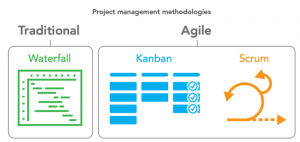When it comes to diversity, equality and inclusion (DEI), where does your organization stand? Have you adequately put measures in place that account for differing backgrounds, perspectives and needs? If you’re like most organizations, these issues were likely on your radar prior to the global pandemic this past year, but they may not have received the full attention they deserve. However, COVID-19 gave some of the spotlight back to DEI initiatives, and wise business leaders are taking note. Here’s a look at how the pandemic has spurred this conversation forward, and what you can do to rise to the occasion.
DEI – Before COVID-19
Prior to the pandemic, one of the greatest and most pressing challenges for companies was understanding the needs and circumstances of diverse employees. As more vocal advocates repeatedly brought this issue to light, more businesses started to step up their considerations for employees. But even though the national conversation has shifted to focus on diversity and inclusion more, statistics continue to show a lagging ability to put these ideals into action.
In fact, one study revealed that “many employees still indicate they don’t believe somebody has their back when times get tough.” Such feelings can fester and lead to “poor outcomes” for both employees and employers, with as many as 50% of employees leaving a job due to shortcomings in diversity and inclusion.
During the height of the pandemic, employers understandably had to shift the bulk of their focus toward prioritizing employee health and safety. But as the worst of COVID-19 began to recede, they were reminded again of this important focus, especially after research showed that minorities and those in lower socioeconomic groups were hit the hardest during the pandemic. Today, it’s imperative that an employer must be their team members’ ally and advocate when they’re dealing with unusual life circumstances like chronic illness, disabilities or limited childcare, or facing societal injustices due to race, religion, gender, or sexual orientation.
DEI – After COVID-19
It’s no surprise, then, that today’s best leaders are prioritizing workforce inclusion more than ever. To be innovative in their approach to managing COVID-19’s impact on business, organizations are seeking input from a diverse group of employees who approach problems from a variety of perspectives. They are also appointing leadership roles, such as Chief of Diversity, to lead efforts in proactively diversifying workforces.
“Diversity leaders will need to be involved in role design and creation of flexible work systems to ensure that employees of all backgrounds and needs are considered when the organization designs new workflows,” said Ingrid Laman, Vice President, Advisory, Gartner.
Organizations are also increasingly turning to employee resource groups (ERGs) and business resource groups (BRGs) to play important roles in strengthening communications and connections across dispersed groups. ERGs intend to bring diverse groups together to find common interests. A survey of Diversity & Inclusion leaders by the Institute for Corporate Productivity (i4cp) found three critical functions ERGs are taking on:
- In 37% of organizations, ERG/BRG leaders are helping monitor the emotional well-being of group members
- In 37% of firms, leaders are surfacing the needs and concerns of group members, who may represent older workers, those with disabilities, or other employee populations
- In 34% of organizations, ERG/BRG leaders are being asked to help keep their employee community members connected and engaged
DEI – In the Future
Not only is championing DEI initiatives the right thing to do from a human perspective, but it also benefits businesses in tangible ways. For example, cognitive diversity has been found to enhance team innovation by up to 20% and 67% of job seekers consider workplace diversity an important factor when considering employment opportunities. It pays in terms of internal culture, respect, human kindness, talent acquisition & retention, innovation – and more.
There’s no doubt that the pandemic has increased employers’ focus on supporting their employees’ financial, physical and mental health. In turn, it is bringing to light the important differences outside of the workplace and the need for understanding and acceptance across the board. This is expected to continue and grow in prominence and depth in the years to come, as well as it should.
Business & Finance Articles on Business 2 Community
(47)






